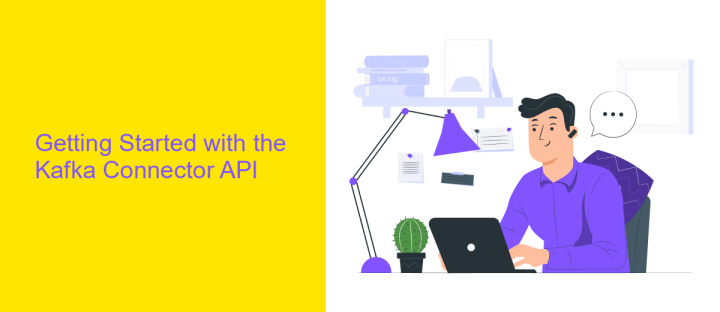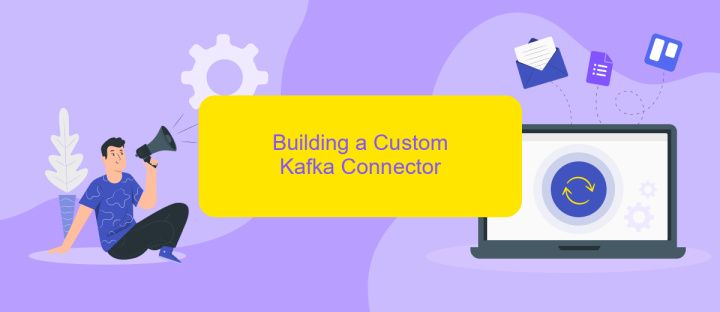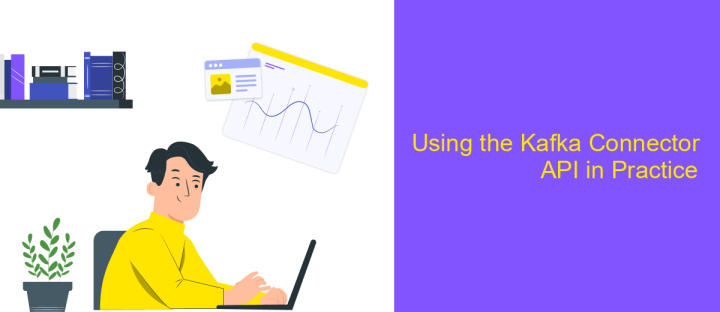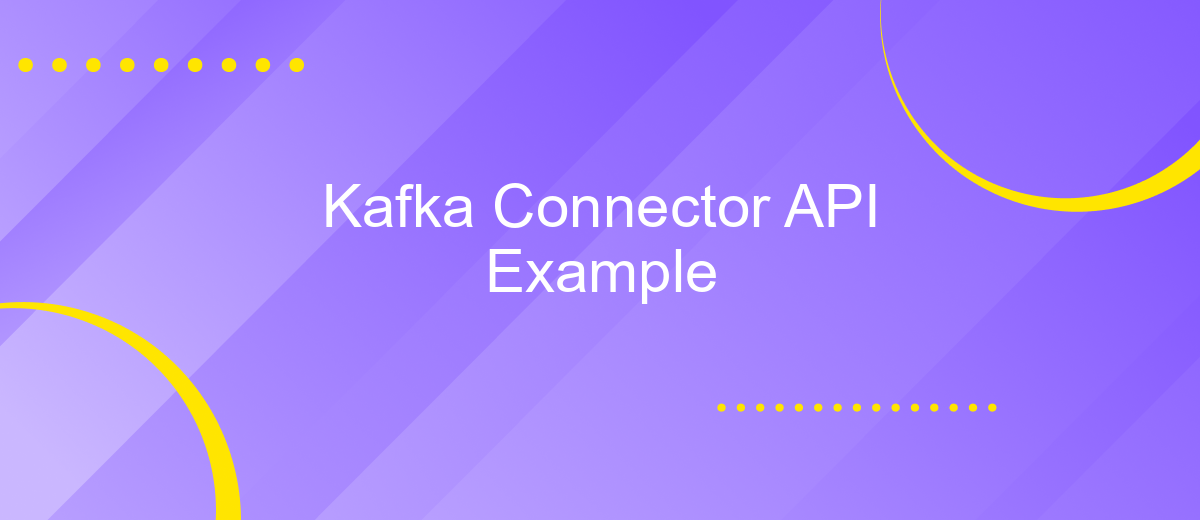Kafka Connector API Example
The Kafka Connector API is a powerful tool that simplifies the integration of Apache Kafka with external systems. By enabling seamless data streaming and processing, it allows developers to build robust, scalable, and real-time data pipelines. This article provides a practical example of using the Kafka Connector API, demonstrating its capabilities and guiding you through the steps to set up and configure connectors effectively. Whether you're new to Kafka or looking to optimize your data workflows, this guide has you covered.
Introduction to Kafka Connector API
The Kafka Connector API is a vital component of the Apache Kafka ecosystem, designed to simplify the integration of data sources and sinks with Kafka. It provides a scalable and reliable mechanism to stream data between Kafka and external systems, enabling seamless data movement across diverse environments. This API is particularly beneficial for organizations looking to build robust data pipelines without the overhead of custom integration solutions.
- Facilitates integration with a wide range of data sources and sinks.
- Supports distributed and fault-tolerant data streaming.
- Offers a plug-and-play architecture with numerous pre-built connectors.
- Enables real-time data processing and analytics capabilities.
- Simplifies scaling and management of data pipelines.
By leveraging the Kafka Connector API, developers can focus on business logic rather than the intricacies of data transfer. It empowers organizations to harness the full potential of their data by ensuring efficient and reliable data flow. Whether you are dealing with databases, file systems, or cloud services, the Kafka Connector API offers a streamlined approach to data integration, making it an indispensable tool for modern data-driven applications.
Getting Started with the Kafka Connector API

To begin working with the Kafka Connector API, it's essential to first understand its architecture and components. Kafka Connect is a framework that simplifies the integration of various data sources and sinks with Apache Kafka. It allows you to ingest data from external systems into Kafka topics and export data from Kafka topics to external systems. This is achieved through connectors, which are reusable components designed to interact with specific data sources or sinks. Before diving into implementation, ensure you have a running Kafka cluster and the necessary permissions to access it.
Setting up your first connector involves configuring the connector properties, which define how data is transferred between Kafka and the external system. Tools like ApiX-Drive can streamline this process by providing a user-friendly interface to manage integrations without extensive coding. ApiX-Drive offers pre-built connectors and customizable options to fit your specific needs, making it easier to automate data flows. Once configured, deploy the connector using the Kafka Connect REST API, and monitor its performance to ensure data is being processed as expected. This approach allows for efficient data integration, enabling real-time analytics and insights.
Building a Custom Kafka Connector

Building a custom Kafka Connector allows you to tailor data integration solutions to specific needs, enhancing data flow efficiency within your architecture. To create a custom connector, you need to understand the Kafka Connect framework and its components, such as source and sink connectors, tasks, and configurations. By leveraging these components, you can develop connectors that seamlessly integrate with various data sources and sinks.
- Define the connector class by extending the SourceConnector or SinkConnector class, depending on your needs.
- Implement the start() method to initialize the connector with necessary configurations.
- Create the task class by extending the SourceTask or SinkTask class to handle data processing logic.
- Override the poll() or put() method to manage data fetching or sending operations.
- Package your connector as a JAR file and deploy it to the Kafka Connect cluster.
After deploying your custom Kafka Connector, monitor its performance and make adjustments as needed to ensure optimal data flow. Proper error handling and logging will aid in troubleshooting and maintaining the connector's stability. With a well-designed connector, you can achieve efficient data integration tailored to your organization's unique requirements.
Using the Kafka Connector API in Practice

Implementing the Kafka Connector API in a real-world scenario involves understanding the core components and how they interact within a data pipeline. The API simplifies data integration between Apache Kafka and other systems, enabling seamless data flow. To effectively utilize this API, one must grasp the concepts of source and sink connectors, which are pivotal in data ingestion and dissemination.
The Kafka Connector API provides a robust framework for building custom connectors, allowing developers to tailor data integration solutions to specific needs. By leveraging this API, organizations can streamline data processing, reduce latency, and enhance scalability. A practical approach involves setting up a development environment, configuring connectors, and monitoring data flow.
- Identify data sources and destinations.
- Configure the connector properties file.
- Deploy connectors using Kafka Connect.
- Monitor connector performance and logs.
By following these steps, developers can efficiently integrate diverse data systems, ensuring reliable and consistent data exchange. The Kafka Connector API not only facilitates data movement but also empowers teams to build resilient architectures that adapt to evolving data needs.
- Automate the work of an online store or landing
- Empower through integration
- Don't spend money on programmers and integrators
- Save time by automating routine tasks
Advanced Features of the Kafka Connector API
The Kafka Connector API offers advanced features that enhance data integration and processing capabilities. One such feature is its ability to handle dynamic scaling. Connectors can automatically adjust to changes in data volume, ensuring optimal performance without manual intervention. This scalability is crucial for businesses dealing with fluctuating data loads, as it reduces the need for constant monitoring and manual scaling adjustments.
Another advanced feature is the support for custom transformations. Users can implement custom logic to transform data as it flows through the connector, enabling complex data processing tasks to be executed in real-time. Additionally, the Kafka Connector API integrates seamlessly with third-party services like ApiX-Drive, which simplifies the setup and management of data integrations. ApiX-Drive provides a user-friendly interface for configuring connectors, allowing businesses to streamline workflows without extensive technical expertise. These advanced features make the Kafka Connector API a powerful tool for managing data pipelines efficiently and effectively.
FAQ
What is Kafka Connector API?
How do I implement a Kafka Connector?
What are the differences between a source and a sink connector?
How can I monitor and manage Kafka Connectors?
Is there a way to automate the integration of Kafka with other systems?
Strive to take your business to the next level, achieve your goals faster and more efficiently? Apix-Drive is your reliable assistant for these tasks. An online service and application connector will help you automate key business processes and get rid of the routine. You and your employees will free up time for important core tasks. Try Apix-Drive features for free to see the effectiveness of the online connector for yourself.


